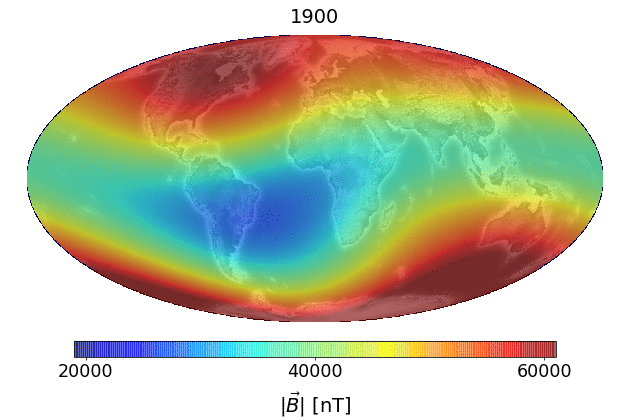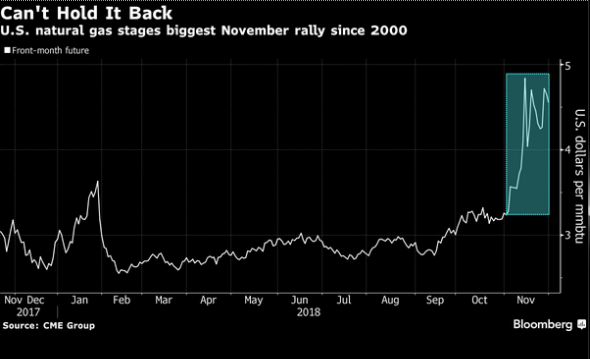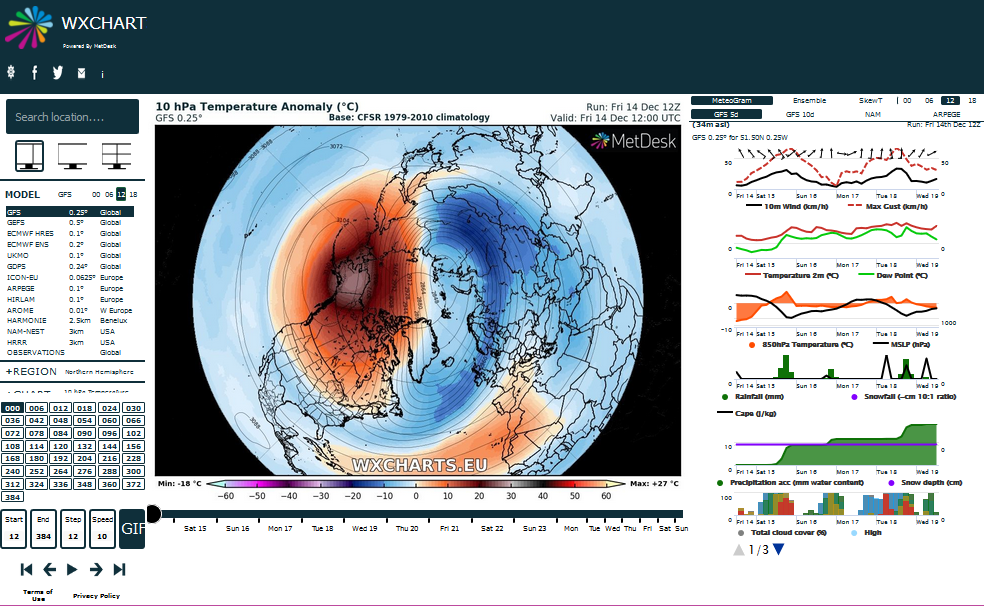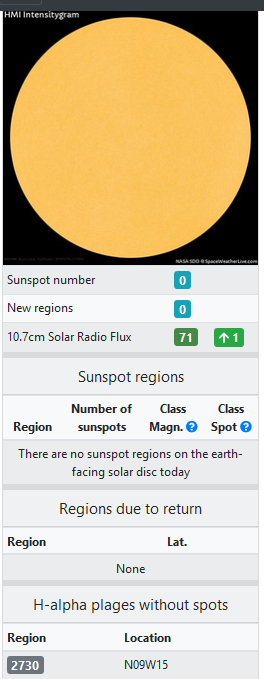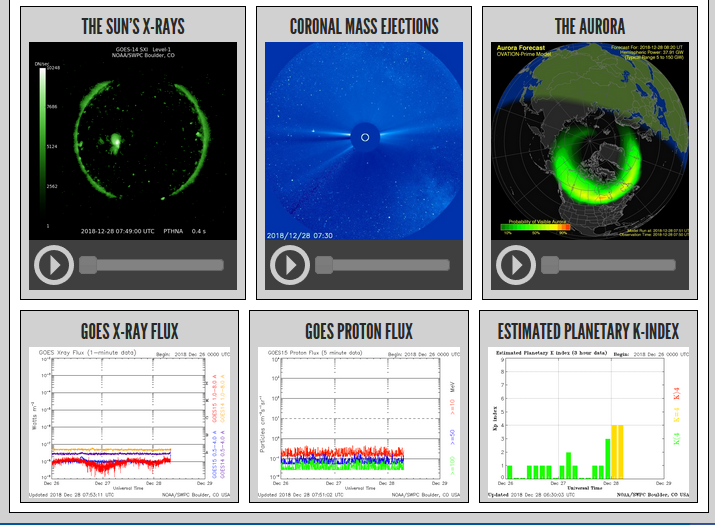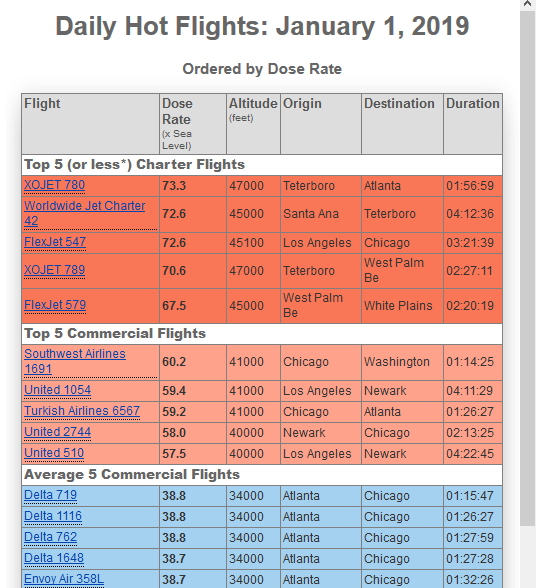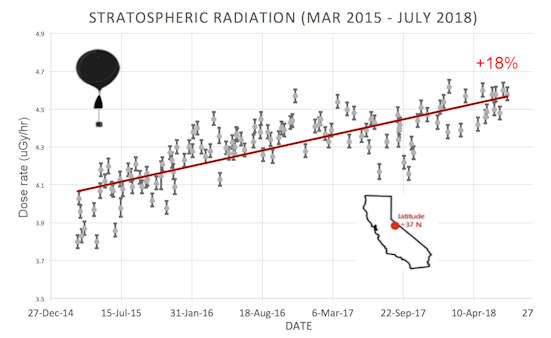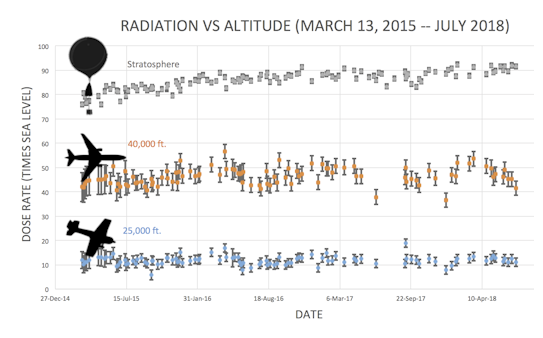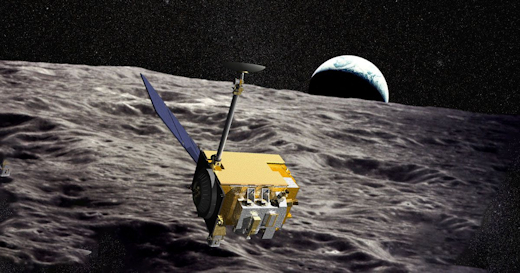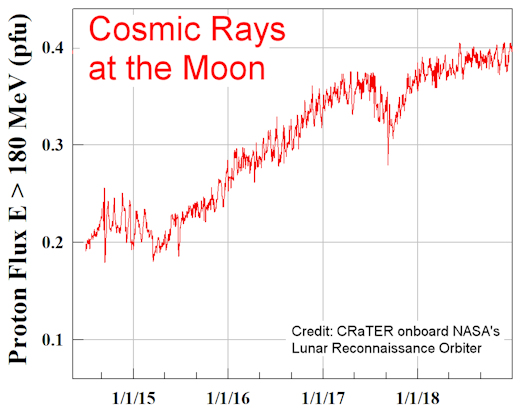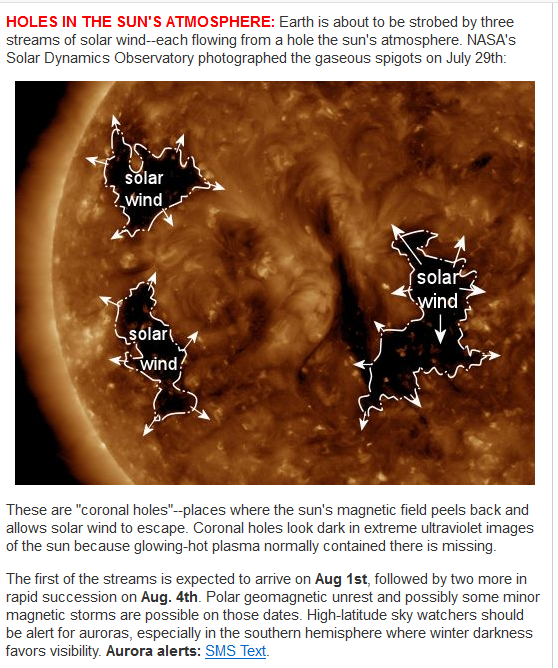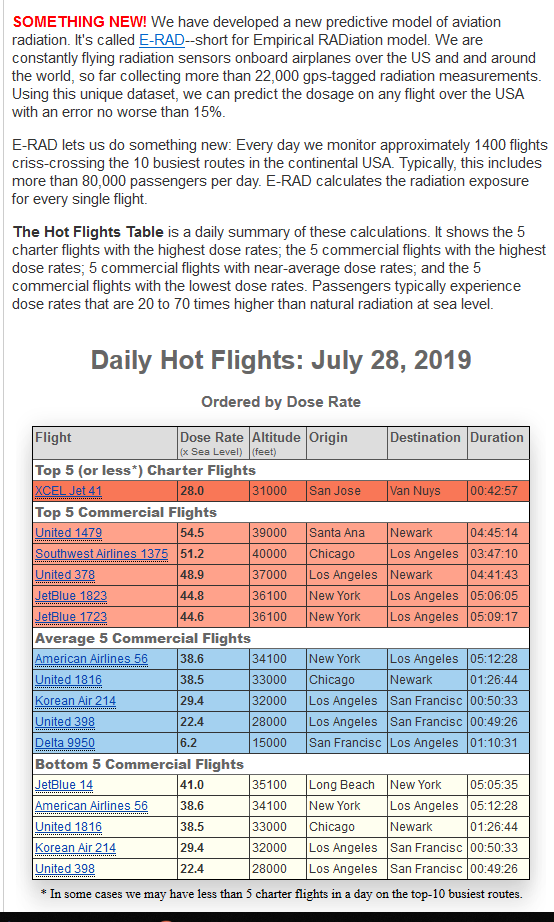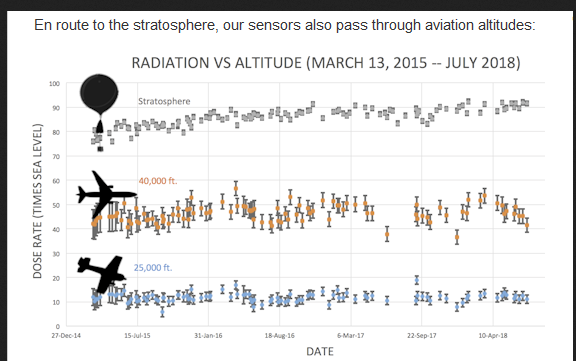Obviously, (and thankfully), we have forum members (that have a higher knowledge base), that may want to add corrections if needed.
Since this article is quite dated. TYVM!
Diet May Improve Cognition, Slow Aging, And Protect Against Cosmic Rays
Washington - Nov 10, 2003
Eating certain foods can help protect you from heart disease, some types of cancers and other illnesses. But can your diet also help protect your brain if you should suffer a stroke or accidental head injury? Or keep your thinking and memory skills strong as you age?
Some scientists believe it might. They even think eating the "right" foods --specifically, those high in antioxidants -- may help defend astronauts from brain-damaging cosmic rays on future manned missions to Mars.
New research also suggests that some of the environmental chemicals that have gotten into many of our foods -- through the application of herbicides and insecticides, for example, or from the leaching of plasticizers from plastic food containers -- may be harmful to children.
This is because of the chemicals' effect on reproductive development and their impact on brain areas involved in thinking and learning. Still other studies are beginning to shed some light on the neurological reasons why men tend to have an easier time than women at losing unwanted weight.
"The role of diet in cognitive function is one of the vastly understudied areas in the neurosciences," says Carl W. Cotman, PhD, of the University of California-Irvine. "As these recent studies show, significant new findings are appearing which highlight the importance of this research on diet and cognitive function."
Eating an antioxidant-rich diet may help keep cognitive skills strong during old age, according to a recent animal study conducted at the University of Toronto. "We found that old dogs that were on an
antioxidant diet performed better on a variety of cognitive tests than dogs that were not on the diet," says P. Dwight Tapp, PhD, now of the University of California Irvine, "In fact, the dogs eating the antioxidant-fortified foods performed as well as young animals."
Antioxidants include vitamin E, vitamin C, and beta carotene (a form of vitamin A), as well as other minerals and compounds found in food. These nutrients have been shown to help reduce oxidation, a process that can cause damage to cells and may contribute to aging, including the reduced cognitive decline that typically develops with age. Studies suggest that antioxidants may also protect against certain cancers, heart disease and other non-neurological age-related diseases.
Tapp and his colleagues used 39 beagles in their current study. Dogs, like humans, develop a range of cognitive impairments as they age. They lose some of their ability to learn new information, for example, and experience more difficulty retaining information in both short-term and long-term memory.
"Although we found that not all cognitive functions respond to antioxidant treatment, our data suggests that antioxidants play an important role in preventing or slowing age-related cognitive impairments," says Tapp.
Interestingly, although eating antioxidant-fortified food improved the cognitive skills of the older dogs, we found no improvement in the younger animals. This suggests, Tapp says, that the diet is most effective in animals that already have some degree of cognitive impairment. The study is currently ongoing in the younger dogs to determine if the diet has a protective effect on age-related cognitive decline in general.
Two years ago, researchers at the Universidad Nacional Aut�noma de Mexico (UNAM) and the University of Houston-Clear Lake (UHCL) reported that a blueberry-enriched antioxidant diet may prevent age-related deterioration of object recognition memory in aged rats.
Now, new findings from the same research group reveal that, in the brains of the same rats, the diet also prevents an age-related increase in a protein (NF-kappaB) that responds to oxidative stress, a probable cause of brain aging.
"Our findings fit into an emerging pattern of data from many laboratories that point to a buildup of oxidative damage as one of the key factors in brain aging," says Pilar Goyarzu, a doctoral student at UNAM under the direction of David Malin, PhD, and Francis Lau. "The findings also suggest that diets rich in natural antioxidants have the potential to slow down this damage."
For the current study, Goyarzu fed rats a blueberry-enriched diet. NF-kappaB levels were then assayed in five different brain regions involved in memory processes (the hippocampus, frontal cortex, striatum, basal forebrain, and cerebellum). The aged rats on the blueberry-enriched diet had lower NF-kappaB levels than aged rats fed a control data. Young control rats also had lower NF-kappaB levels than the aged control rats.
"We also found that among the aged rats, the higher the NF-kappaB levels, the poorer their memory scores," says Goyarzu. The UNAM and UHCL researchers are now studying the effects of aging and diet on other proteins that mediate the effects of oxidative stress in the brain.
At the National Institute on Aging's (NIA) Gerontology Research Center in Baltimore, Maryland, scientists have found that blueberries can help lessen some of the functional damage caused by a brain injury.
"Our results suggest that the consumption of blueberries and perhaps other fruits and vegetables could have a positive neurological impact on the aging brain, Alzheimer's disease, and other neurological disorders," says Edward L. Spangler, the lead author of the study.
Spangler and his colleagues fed one group of young rats a diet supplemented with a 2 percent blueberry extract; another group was fed the same diet, but without the extract. After two to three months, all the animals received chemically-induced lesions in their hippocampus, a region deep within the brain that plays an essential role in learning and memory.
Damage to the hippocampus results in an inability to remember recent events. The researchers then tested the animals' ability to learn a complicated maze task. The rats that had been fed the blueberry extract were significantly less impaired at performing the task than those that didn't receive the extract.
"We believe the blueberries contain a particular group of as-yet unidentified bioactive chemicals that ameliorate the functional consequences of brain damage, including a loss of the ability to learn or remember recent events," says Spangler.
Researchers at the University of Maryland, Baltimore County (UMBC) and the U.S. Department of Agriculture in Boston have found that an antioxidant-rich diet may help stave off the harmful, immediate effects of certain cosmic radiation.
"These findings may help protect future astronauts from the dangerous physical and mental effects produced by extended radiation exposure on long-term space missions," says UMBC's Bernard M. Rabin, PhD.
One of the biggest obstacles facing a future manned mission to Mars is the hazard that an extended, three-years-long space flight poses to the human nervous system. Highly radioactive, subatomic particles known as cosmic rays can cause severe damage to an astronaut's brain and central nervous system.
To see if antioxidants might provide future space travelers some protection, Rabin and his colleagues fed one group of rats a control diet and another group a diet containing either a 2 percent blueberry or a 2 percent strawberry extract for two months.
Then, using facilities at the Brookhaven National Laboratory (the NASA Space Radiation Laboratory), the researchers exposed the rats to the equivalent of space radiation -- 1.5 Gy of 56Fe particles. Afterwards, the rats were put back on the antioxidant diet for one more week before being shipped to UMBC and trained to press a lever to receive food.
Seven months later, all the radiated animals were tested to determine whether they were able to respond appropriately to increases in work requirements. The control rats and those fed the antioxidant-rich diets responded similarly.
When tested again at 12 months, however, the radiated rats that had been fed either the control or the blueberry extract diet performed less well than those fed the strawberry extract diet. In fact, the "strawberry" rats performed as well as non-irradiated rats.
"These results suggest that certain antioxidant diets can prevent some of the cognitive changes that occur with exposure to cosmic rays," says Rabin. He and his colleagues are now studying the effect of different antioxidant diets on other tasks and behaviors.
New studies from Florida State University (FSU) in Tallahassee, Florida, may help explain why women are more prone to weight gain and shed fewer pounds through exercise than men.
In studies involving male and female rats, Lisa A. Eckel, PhD, and graduate student Shelley Moore found that females were much more susceptible than males to overeating when presented with a sweet-tasting diet. They also discovered that exercise helps males overcome their urge to overeat such foods, but not females.
"When given access to running wheels, only the male rats decreased their food intake," says Eckel. "The female rats continued to overeat. This suggests that females are more vulnerable than males to over eating a palatable, sweet-tasting diet."
In the past, few animal studies of overeating have involved females, although obesity is greater in women than in men. According to the Centers for Disease Control (CDC), 33 percent of women in the United States are overweight compared to 28 percent of men.
For both sexes, however, obesity has become a growing and serious health problem. CDC statistics released in 2002 showed that the number of obese people in the United States has doubled over the past two decades. Obesity has been linked to a host of potentially deadly health problems, including heart disease, stroke, diabetes and certain cancers.
One of the next steps in this research, says Eckel, is to determine the hormonal basis for why female rats are more susceptible to overeating than their male counterparts. "We intend to investigate the sex differences in the release of neurotransmitters and neuropeptides that regulate appetite and the preference for sweet tastes," she says.
Researchers at Mississippi State University have found that early exposure to environmental chemicals that mimic or block the action of the sex hormones estrogen and testosterone may disrupt normal differences in the brain between males and females -- differences that affect thinking and learning as well as sexual behavior. These findings add more scientific support to the growing concern that exposure to environmental chemicals is harmful, particularly to children.
In recent years, scientists have increasingly linked environmental chemicals to certain reproductive abnormalities, particularly premature or delayed sexual development. "In the last decade, we've also come to understand that sex hormones play an important role in the maturation of other, non-reproductive systems," says Russell Carr, PhD.
"It's now known that estrogen is a key player in the development of the nervous system, and that the presence or absence of estrogen during development causes significant differences in the brains of both male and female animals." These gender-related differences are connected to areas of the brain involved in cognitive as well as reproductive functions.
In their recent study, Carr and his colleagues administered several environmental chemicals orally to newborn rats for two weeks, beginning one day after the animals' birth. The chemicals selected for the study were the sex hormone estradiol (E2); the synthetic estrogen diethylstilbesterol (DES); the plasticizer bisphenol A (BPA), which has been shown to leach out of plastics into food; the herbicide atrazine (ATR), which has been suggested to be estrogenic; and the insecticide methoxychlor (MC), which mimics estrogen once it's metabolized in the body. During and after the exposure period, the researchers measured the effects of the chemicals on the animals' brain development.
They specifically looked for changes in the levels of the neurotransmitters dopamine, serotonin and norepinephrine, as well as some of their metabolites, in various regions of the brain. These levels were then compared to levels in control animals.
At one week following the end of exposure, no significant changes were detected in the overall levels of neurotransmitters between the treated and the control groups.
The scientists did, however, make a startling discovery: In the control animals, there was a significant difference between males and females in the levels of neurotransmitters observed in two areas of the brain, the cerebellum and hippocampus. In the treated animals, no such differences were found.
These findings support earlier studies from MSU that had shown a similar gender-dependent effect of an environmental chemical (the plasticizer BPA) on cognitive function.
"This suggests that the main effect of developmental exposure to these chemicals is the disruption of the normal differences between males and females," says Carr. "It's a subtle effect because exposure to these chemicals doesn't produce any significant effects on brain neurochemistry within each sex."

